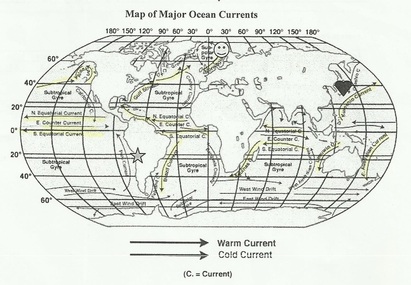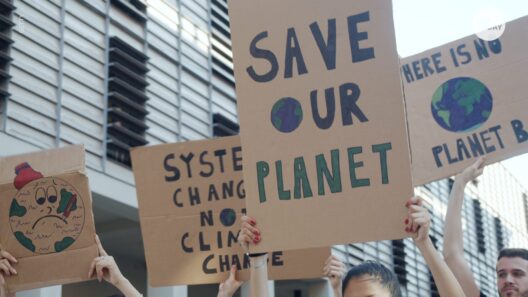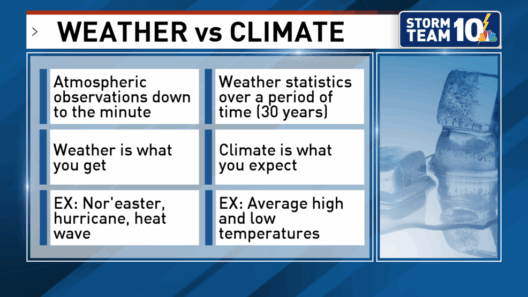Climate is a term that permeates discussions about our environment, encompassing the atmospheric conditions that prevail in a particular region over extended periods. It encompasses the average weather patterns, variations, and extremes experienced in a specific geographical area. Typically categorized over decades, climate reflects not just the temperature, but also the patterns of precipitation, humidity, wind, and other meteorological phenomena. Understanding climate is crucial for addressing various environmental challenges, alongside the implications for ecosystems, agriculture, and human health.
The big question that emerges is: what exactly constitutes “climate”? Below, we delve into the nuances of climate, providing a comprehensive guide that elaborates on its definitions, different types, examples, and the critical elements that shape it.
Defining Climate: The Big Picture
At its core, climate can be defined as the average weather conditions of a particular area over a significant period, typically classified as 30 years. It differs from weather, which refers to the short-term atmospheric conditions at a given moment, often fluctuating rapidly within a day or week. While weather may dictate whether it’s sunny or rainy on a specific day, climate paints a broader picture of what weather is typically like in a region throughout the seasons.
Climate is influenced by a multitude of factors including latitude, altitude, topography, and proximity to oceans and large bodies of water. These variables significantly affect how solar energy is distributed across the Earth, impacting everything from temperature to rainfall patterns. Understanding these foundational elements can provide insights into why different regions have distinct climates.
Types of Climate: A Global Overview
Climates around the world can be broadly classified into several categories based on a variety of parameters. Each category reflects particular characteristics that are significant for the biosphere and human activities.
1. Tropical Climate
Found near the equator, tropical climates are characterized by warm temperatures year-round and high humidity. This climate type experiences abundant rainfall, supporting lush vegetation and diverse ecosystems. Regions like the Amazon Basin, Central Africa, and Southeast Asia exemplify tropical climactic conditions, fostering rich biodiversity. However, these regions face challenges such as deforestation and climate change impacts that threaten their ecological balance.
2. Arid and Semi-Arid Climate
Arid and semi-arid climates, often associated with deserts, are characterized by minimal precipitation. These climates, seen in places such as the Sahara Desert or the Australian Outback, present unique ecological challenges. Life here has adapted to extreme conditions, leading to specialized flora and fauna that can withstand prolonged dry periods. However, these regions are also sensitive to changes, such as increased temperatures and altered rainfall patterns due to global warming.
3. Temperate Climate
Temperate climates enjoy moderate weather and often experience four distinct seasons: winter, spring, summer, and autumn. This type is prevalent in regions such as much of Europe, parts of North America, and East Asia. The diverse seasons facilitate a wide range of agricultural activities, yet they also expose regions to the impacts of climate change, such as unpredictable weather patterns and increased storm frequency.
4. Polar Climate
Polar climates, characteristic of regions like Antarctica and Greenland, are defined by their extreme cold temperatures and long winters. These climates have incredibly short growing seasons, resulting in adaptations in flora and fauna. The fragility of polar ecosystems makes them particularly vulnerable to climate change, leading to concerns regarding ice melt and rising sea levels.
Climate Change: A Pressing Concern
Today’s discussions about climate cannot overlook the urgent issue of climate change. Defined as long-term alterations in temperature and typical weather patterns, climate change has far-reaching implications. Driven primarily by anthropogenic factors such as greenhouse gas emissions from burning fossil fuels, deforestation, and industrial activities, the consequences of climate change are increasingly evident.
Shifting climate patterns lead to disruptions in agriculture, threatening food security as crops may fail due to erratic weather conditions. Water resources become strained in areas experiencing both droughts and flooding. Moreover, the amplification of extreme weather events—hurricanes, wildfires, heatwaves—poses severe threats to human life, property, and biodiversity.
Mitigating Climate Impact: Global Efforts
Addressing climate change is a collective responsibility. From the Paris Agreement, aiming to limit global warming to below 2 degrees Celsius, to grassroots movements advocating for sustainable practices, efforts are being made at various levels. Innovations in renewable energy, energy efficiency, and conservation practices are pivotal in reducing our ecological footprint.
However, acknowledgment of the climate crisis must extend beyond political agendas. Education and awareness play integral roles in galvanizing public support for eco-friendly initiatives. Individuals can contribute through lifestyle changes, such as reducing waste, promoting sustainable transport, and supporting conservation efforts.
Conclusion: Embracing Climate Awareness
Understanding climate is fundamental to fostering a sustainable future. Thorough comprehension of its definitions, types, and the overarching threats posed by climate change enables informed decisions and proactive measures. As stewards of our planet, each one has the power to influence climate outcomes through individual actions and collective initiatives. In doing so, we can safeguard the delicate balance that sustains life on Earth and create a resilient future for generations to come.





